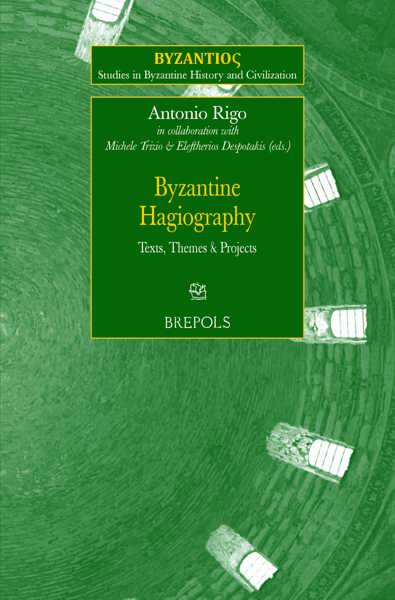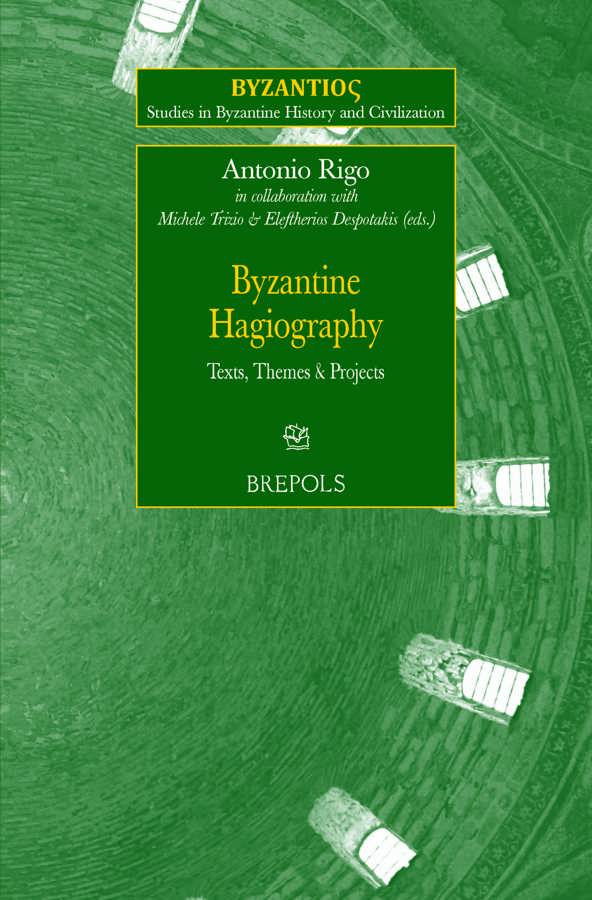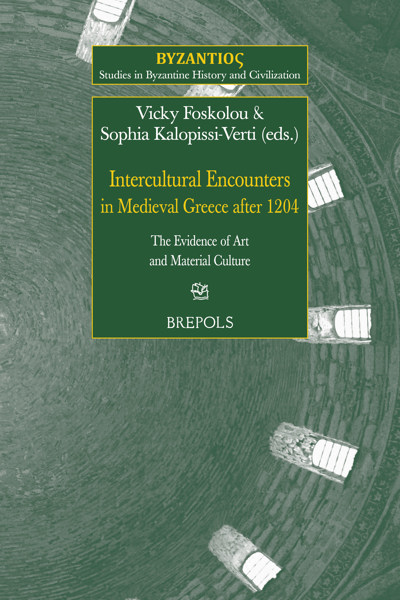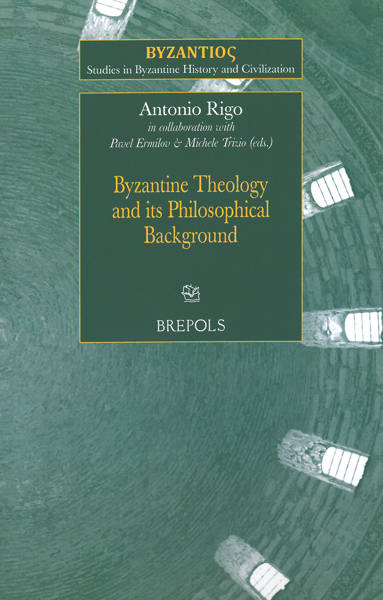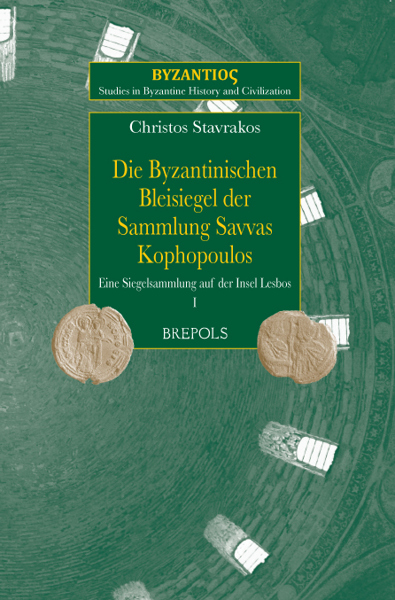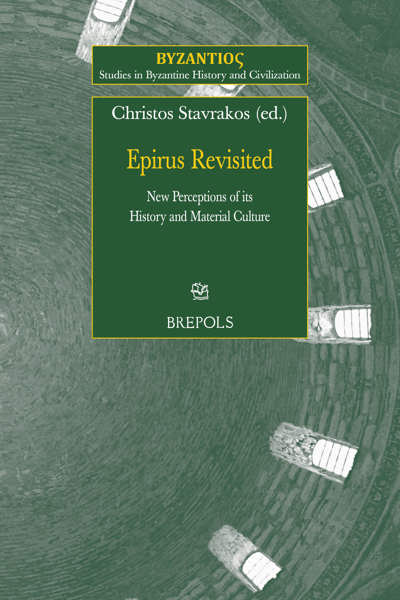
Byzantine Hagiography: Texts, Themes & Projects
Antonio Rigo, Michele Trizio, Eleftherios Despotakis (eds)
- Pages: x + 506 p.
- Size:156 x 234 mm
- Illustrations:21 b/w
- Language(s):English, French, German
- Publication Year:2018
- € 105,00 EXCL. VAT RETAIL PRICE
- ISBN: 978-2-503-57771-5
- Paperback
- Available
- € 105,00 EXCL. VAT RETAIL PRICE
- ISBN: 978-2-503-57772-2
- E-book
- Available
An introduction to the current Byzantine hagiographical studies and projects
“(…) this collection will be of interest to scholars of Byzantine hagiography and related fields.” (Lucy Parker, in Bryn Mawr Classical Review, 09/07/2019)
"It is an advantage of this miscellaneous volume that most papers pertain to middle and late Byzantine hagiography which is yet to fully reap the benefits of systematic scholarly attention". (Stephanos Efthymiadis, in The Medieval Review, 06/12/2019)
“It is certainly very useful for Byzantinists and other medievalists working on hagiography and other related genres.” (Stavroula Constantinou, in BYZANTINA ΣΥΜΜΕΙΚΤΑ, 30, 2020, p. 397)
Antonio Rigo is Professor of Byzantine Philology and Christianity at Ca' Foscari - University of Venice. His research focuses on religious life in Byzantium, with special emphasis on ascetical and mystical literature, heresiology, and theology during the Paleologan period.
In recent years Byzantine hagiography has attracted renewed interest of the international community of Byzantine scholars and not only thanks to studies dedicated to this subject and critical editions of individual texts, but also because hagiography has been the main focus of numerous major research projects: databases, new repertories, a new version of the Bibliotheca Hagiographica Graeca and some very useful handbooks dedicated to this literary genre during the Byzantine Empire. These researches have analysed Byzantine hagiography in relation to the hagiographic writings composed in neighbouring areas, the West, the Syriac and Arabic Middle East, the Southern Slavs, etc. but also the relations between the hagiographical texts and other literary genres.
This volume introduces the current developments of hagiographical studies and on-going projects on the subject, and investigates a variety of texts and authors from the Patristic period to the end of Byzantium.
Bernard Flusin, L’hagiographie byzantine et la recherche : tendances actuelles
Xavier Lequeux, La Bibliotheca Hagiographica Graeca : origine, développements et mise à jour
Donatella Bucca, «Codices hymnographici Byzantini antiquiores»: descrizione del database
Francesco d’Aiuto, Il «Menologio Imperiale» un secolo dopo (1911-1912) l’editio princeps di Vasilij Latyšev
Andrea Luzzi, Un canone «giambico» per Basilio di Cesarea e la circoncisione del Signore e il suo raffinato acrostico tetrastico fra critica filologico-letteraria e teologia
Darya Penskaya, Hagiography and Fairytale Paradise and the Land of Blessed in Byzantium
Yulia Mantova, Space Representation in the Life of St Gregentios and the Life of St Nikon the Metanoite
Marina Detoraki, Récits édifiants et hagiographie. À propos du Pré spirituel
Sophie Métivier, Peut-on parler d’une hagiographie aristocratique à Byzance (VIIIe-XIe siècle) ?
Denis Kashtanov, Alexander Korolev, Andrej Vinogradov, The Chronology Relating to the Hagiographic Tradition of St Clement of Rome
Sergey Ivanov, The Vita of the Patriarch John the Faster as a Historical Source
Vincent Déroche, Les deux Vies de Théodose le cenobiarque
Katerina Nikolaou, The Depiction of Byzantine Woman in Hagiographical Texts (Eighth-Eleventh Centuries)
André Binggeli, La réception de l’hagiographie palestinienne à Byzance après les conquêtes arabes
Sergey Frantzouzov, La réception et le développement de l’hagiographie byzantine dans le milieu arabe orthodoxe (d’après un recueil hagiographique arabe de la Bibliothèque de l’Académie Roumaine)
Albrecht Berger, Serienproduktion oder Autorenwettbewerb? Einige Bemerkungen zu Byzantinischen hagiographischen Texten des zehnten Jahrhunderts
Alice-Mary Talbot, Some Observations on the Life of St. Basil the Younger
Dmitry Afinogenov, Integration of Hagiographic Texts into Historical Narrative. The Cases of the Lives of St. Stephen the Younger and Niketas of Medikion
Lev Lukhovitsky, Perception of Iconoclasm in Late Byzantine Hagiographical Metaphraseis
Nike-Ekaterini Koutrakou, Τhe Hagiographers’ Pen. Painting Social Unrest and Civil Strife in Late Byzantium
Eleonora Kountoura-Galake, Ideological Conflicts in Veiled Language as Seen by the Palaiologan Hagiographers. The Lives of St. Theodosia as a Case Study
Andrea Babuin, Il dittico di Cuenca e l'Epiro in epoca tardo-medievale
Smilja Marjanović-Dušanic, Le changement de la fonction du genre anachorétique : l’hagiographie balkano-slave dans le cadre de la fin du XIIIe siècle
Antonio Rigo, Marco Scarpa, The Life of St Theodosius of Trnovo reconsidered
